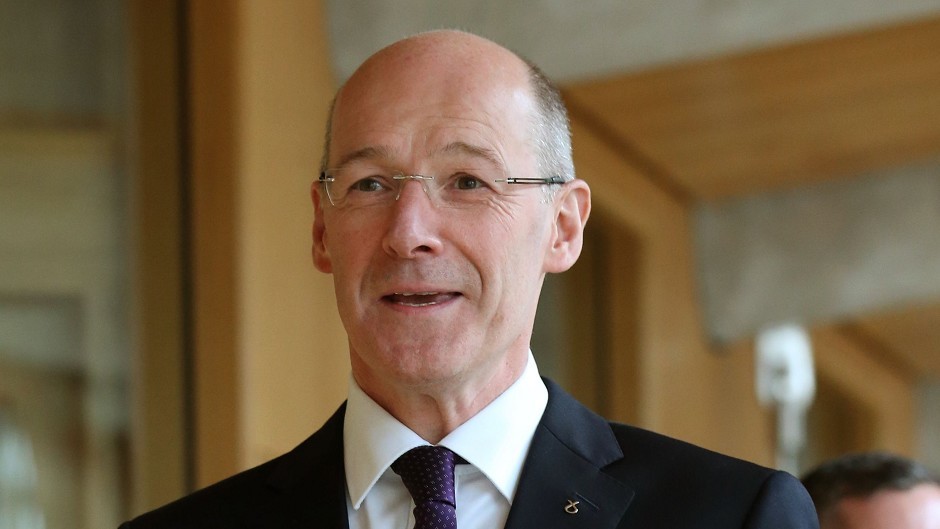The Scottish Government will continue to argue for more powers despite sweeping proposals for more devolution recommended by the Smith Commission.
Deputy First Minister John Swinney provoked uproar on opposition benches when he claimed the commission – on which he was a member – had “simply not delivered”.
In a statement to the Scottish Parliament he said last week’s report contained a number of recommendations that will enable Holyrood to “better serve the people of Scotland”.
“On behalf of the Scottish Government I welcome the contents of the report but regret that a wider range of powers has not been delivered,” he said.
Among the extra powers that Mr Swinney welcomed were the devolution of air passenger duty (APD), more control over income tax, a range of welfare benefits and the power to extend the vote to 16 to 17-year-olds.
He expressed regret that employment law, health and safety, trade union law, the minimum wage, immigration, variable capital allowances, child support and equality law remain reserved.
“Although the commission may not have given us all the tools that we want and for which we will continue to argue, we in the Scottish Government stand ready to play our part, and we now look forward to the next steps in Scotland’s journey,” Mr Swinney said.
The Scottish Government claims that just 29% of taxes raised in Scotland will be under the control of Holyrood, while opposition benches say the figure will be well over half.
Fellow commission member and former Conservative leader Annabel Goldie said the proposals would result in a “sweeping transfer of new powers to this parliament”.
“Scotland will now raise over 60% of what she spends, she will be amongst the most powerful sub-legislatures in the world,” she said.
“And I think the SNP reaction to this confirms the reality – I think the SNP knows that the Smith Agreement shot their fox.”
Labour commission member, former Scottish leader Iain Gray, outlined a list of new powers from Scotland such as the power to control income tax bands, redesign the work programme to get people back into work, the redeployment of disability benefit, control of child benefit and new borrowing powers.
“This is the vow delivered. Scotland knows it,” he said.
Liberal Democrat leader Willie Rennie challenged Mr Swinney, saying: “The government could embrace these new powers, these new radical powers for Scotland, or is he just going to forever re-run the referendum that he just lost?”
